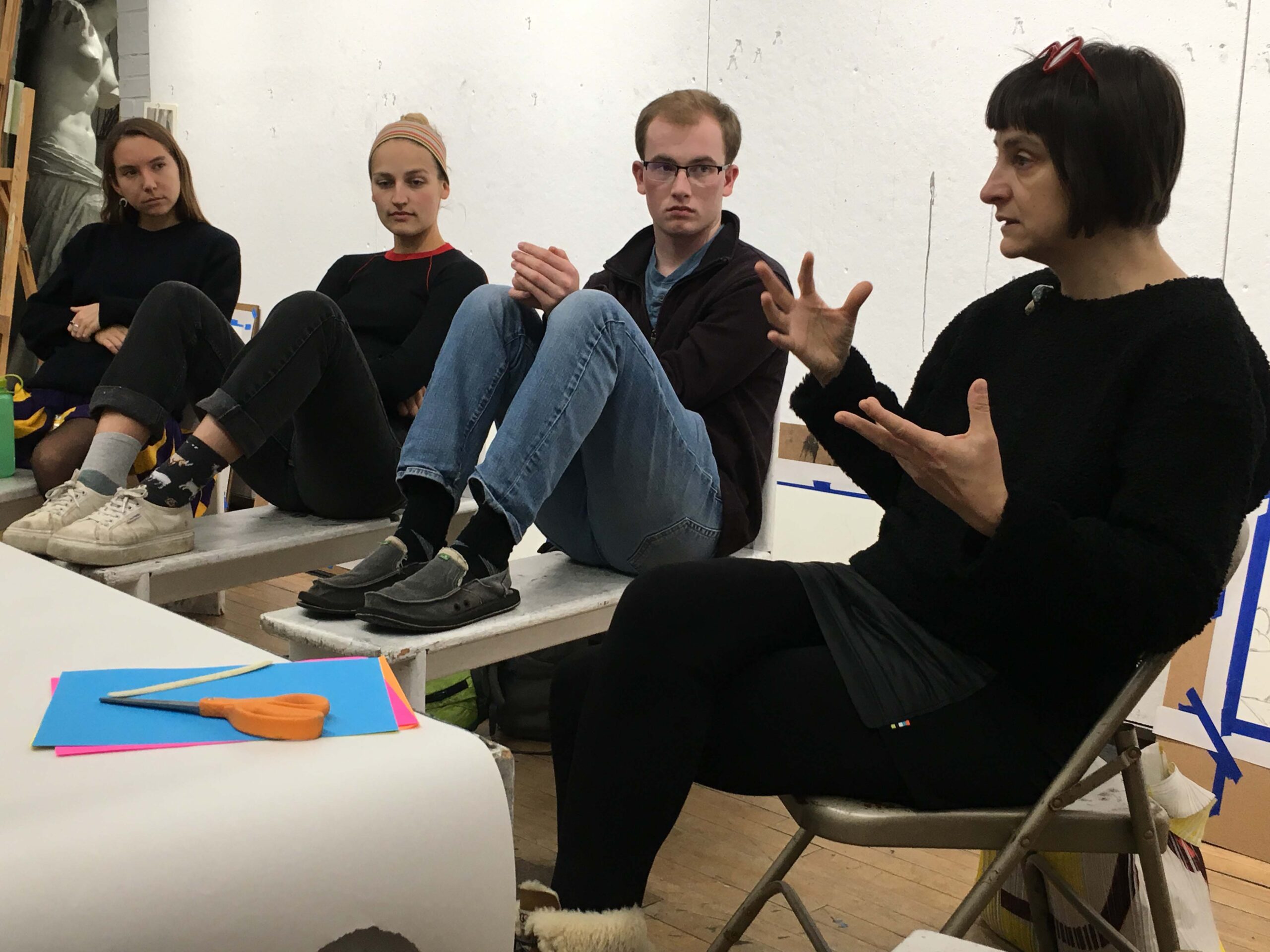Dezsö reflects on Romania and finding her artistic voice
November 1, 2019
 Mary Hart
Mary HartAt the Bedford Park Boulevard-Lehman College subway station in the Bronx, a stunning glass mosaic mural covers the entire mezzanine wall. Entitled “Community Garden,” it depicts large, colorful fruit, insects, flowers and animals. For this work, Andrea Dezsö was awarded the best American Public Art Prize in 2007.
Dezsö is this year’s halley k. harrisburg and Michael Rosenfeld Artist-in-Residence at Bowdoin. Through this monetary gift, the visual arts faculty invites an acclaimed artist every year to work with students and the college community. As part of this program, Dezsö gave a talk on Monday night about the methods and motifs that inform her work, whether it’s in a subway station or a book of fairytales.
Her large scale hand-cut glass mosaics are displayed in multiple New York City subway stations, at the City University of New York BMCC Fiterman Hall Atrium and outside the United States Embassy in Bucharest, Romania. When commissioned for a mosaic she tries to incorporate the people of an area into her design.
“I walk around in the neighborhood where [the mosaic] is going to be. I read about the neighborhood … and I try to find something that resonates with the history of the neighborhood,” said Dezsö.
At the talk Dezsö described her childhood in Transylvania, Romania under the communist government. When travel and individuality were restricted, she learned to escape through her imagination. She attributes much of her artistic influence to this period.
“We were supposed to be people very similar to each other,” she said. “There’s a saying which goes something like this in translation: the nail that sticks out gets hammered down.”
In high school, where Dezsö first began her training as an artist, teachers advised her to play it safe.
“I was told by my teachers that you have to come up with one thing, and people will know you by the thing that’s going to be your brand and your style,” said Dezsö. “If you want to be taken seriously as an artist … just do this one thing. And that didn’t seem like something that was inspiring to me personally. I wanted to experiment.”
Dezsö’s individual flare and desire for experimentation can be found in her wide variety of media: sculpture, installation, public art, embroidery and tunnel books.
Her embroidery features motifs of Transylvanian folk art. Stitched into the pieces are superstitious quotes from her mother.
“My mother claimed that eating greasy food without bread is what gives people herpes,” she offered as an example.
On a more serious level, the medium itself plays a major role within her vision, embodying the heritage of her artistic traditions.
“Embroidery is … handed down from mother to daughter or from an older family member to a younger. I wanted to do my project through this medium,” she said.
In 2010 Dezsö was commissioned by Rice University in Houston, Texas to create a gallery-sized tunnel book, which consists of paper cut and layered to make three-dimensional illusions. The theme was imaginary travel—something very close to Dezsö’s childhood.
“We weren’t free to travel. So travel took place mostly in the imagination through books or through imagining places,” she said. “I always imagined that one day we might be able to travel in space.”
Dezsö’s illustrations in “The Original Folk & Fairy Tales of the Brothers Grimm: The Complete First Edition,” published in 2014, mirror her work with tunnel books, featuring the same use multiple dimensions and silhouette figures. During her talk she spoke about the process of deciding which images to illustrate.
“If an image jumps out to me, I’m looking really where the heart of the story is, then I underline it or highlight it and I make a very small little sketch on the side,” she said. “Then that little sketch becomes a little more detailed sketch and a little more refined sketch.”
When taking questions from the audience, Dezsö was asked about how she maintains her unique style throughout these multiple media.
“You have your own speaking voice. You don’t think about it too much,” she said. “I just draw and paint the way it goes … so I never really think about a style or cultivating a style or anything. It just turns out the way it is because that’s how it’s going to be.”
Dezsö’s residency at Bowdoin will culminate in an exhibit in the Bowdoin College Museum of Art this Winter entitled “Visitors.”

Comments
Before submitting a comment, please review our comment policy. Some key points from the policy: